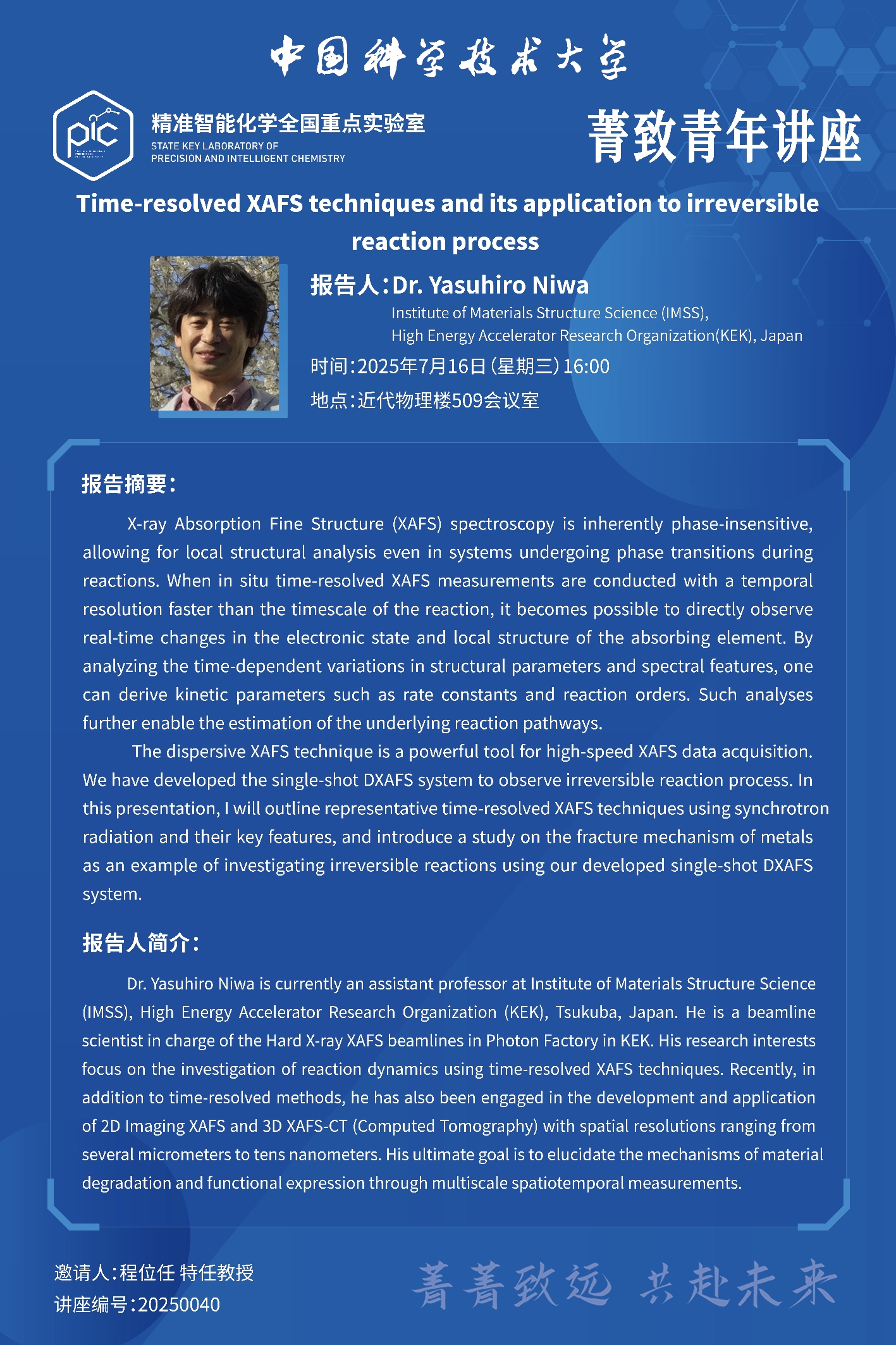报告题目 | Time-resolved XAFS techniques and its application to irreversible reaction process |
报告人 | Dr. Yasuhiro Niwa |
报告人单位 | Institute of Materials Structure Science (IMSS), High Energy Accelerator Research Organization(KEK), Japan |
报告时间 | 2025年7月16日(星期三)16:00 |
报告地点 | 近代物理楼509会议室 |
主办单位 | 精准智能化学全国重点实验室 |
X-ray Absorption Fine Structure (XAFS) spectroscopy is inherently phase-insensitive, allowing for local structural analysis even in systems undergoing phase transitions during reactions. When in situ time-resolved XAFS measurements are conducted with a temporal resolution faster than the timescale of the reaction, it becomes possible to directly observe real-time changes in the electronic state and local structure of the absorbing element. By analyzing the time-dependent variations in structural parameters and spectral features, one can derive kinetic parameters such as rate constants and reaction orders. Such analyses further enable the estimation of the underlying reaction pathways. The dispersive XAFS technique is a powerful tool for high-speed XAFS data acquisition. We have developed the single-shot DXAFS system to observe irreversible reaction process. In this presentation, I will outline representative time-resolved XAFS techniques using synchrotron radiation and their key features, and introduce a study on the fracture mechanism of metals as an example of investigating irreversible reactions using our developed single-shot DXAFS system. | |
报告人简介 | Dr. Yasuhiro Niwa is currently an assistant professor at Institute of Materials Structure Science (IMSS), High Energy Accelerator Research Organization (KEK), Tsukuba, Japan. He is a beamline scientist in charge of the Hard X-ray XAFS beamlines in Photon Factory in KEK. His research interests focus on the investigation of reaction dynamics using time-resolved XAFS techniques. Recently, in addition to time-resolved methods, he has also been engaged in the development and application of 2D Imaging XAFS and 3D XAFS-CT (Computed Tomography) with spatial resolutions ranging from several micrometers to tens nanometers. His ultimate goal is to elucidate the mechanisms of material degradation and functional expression through multiscale spatiotemporal measurements. |

